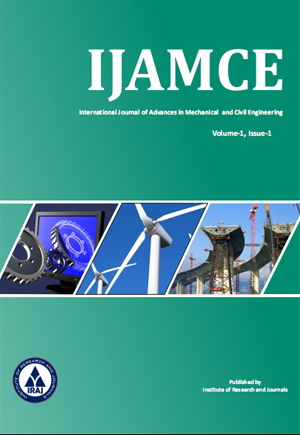Publish In |
International Journal of Advances in Mechanical and Civil Engineering (IJAMCE)-IJAMCE |
 Journal Home Volume Issue |
||||||||
Issue |
Volume-2, Issue-1 ( Feb, 2015 ) | |||||||||
Paper Title |
Application Of Self Organizing Maps (SOMS) Method To Rainfall Stations Clustering In Multisite Regions | |||||||||
Author Name |
Farzad Fahimi, Ahmed H. El-Shafie | |||||||||
Affilition |
PhD candidate Department of Civil and Structural Engineering, Faculty of Engineering and Built Environment, University Kebangsaan Malaysia Associate Professor, Department of Civil and Structural Engineering, Faculty of Engineering and Built Environment, University Kebangsaan Malaysia | |||||||||
Pages |
33-37 | |||||||||
Abstract |
One of the critical challenges in hydrology is to improve the accuracy of rainfall-runoff modeling. Over the past decades, Researchers have tried to overcome this challenge by developing new models that utilize and combine several powerful methods. However, still, due to the inherent nonlinearity and high-dimensionality of hydrological data, there are several problems in hydrological modeling that are remained unanswered. For instance, the efficiency of these models is pertinent to the size of the data sets. One of the potential solutions for this problem is by decreasing the number of input data and lowering the dimensionality of models’ input. This way, rainfall stations in a specific watershed could be clustered into several groups and then only one station of each group can be used for modeling. This paper aims to represent a new method for clustering rainfall stations in multisite regions by using Self Organizing Maps (SOMs). In order to evaluate the performance of the proposed clustering method, Feed-Forward Neural Network (FFNN) method is used to model the streamflow and both clustered and non-clustered daily recorded data of rainfall stations in Sungai Johor river watershed are represented and compared. The results indicated that SOM method has satisfactory performance in clustering rainfall stations in multisite regions. Keywords- Artificial Neural Networks, Self Organizing Maps, Multisite Regions, Rainfall Stations Clustering. | |||||||||
| View Paper | ||||||||||